Keywords
|
| Image denoising, Nonlocal means filter, wavelet domain, Gabor filter. |
INTRODUCTION
|
| Generally noise is introduced in the image during image transmission. The added noise will be of various kinds like additive random noise (Gaussian noise), salt and pepper noise, etc. Depending on the type of the noise, the degradation of the image will vary. According to the percentage of image quality degradation, the noise removal techniques must be chosen. The traditional methods of noise removal include NLM filter, Total Variation (TV) method, Shrinkage models and different transforms. The wavelet transform, curvelet transform and wave atom transform are the efficient transforms for image denoising algorithms. Some of the techniques are using fuzzy logic and other tools. |
| Most of the noise removal techniques suggested till now are based on what type of noise is introduced. Also the application to which the image and video are to be used, decides the required noise removal algorithm. |
| Section I demonstrates the different types of noises and the method of reducing them. Section II deals with the schemes of denoising procedures applied till now for best noise reduction performances and a comparison between several parameters is done. Section III concludes the discussion of all specified algorithms and the method to be proposed for improving image enhancement. This is followed by the references. |
IMAGE DENOISING ALGORITHMS
|
| Krishan Kant Lavania, Shivali and Rajiv Kumar [1] proposed CB (Center-to-Boundary) and BB (Boundary-to- Boundary) Filters for improving image quality. More than 1000 images have been used to carry out the analysis using these CB and BB Filtering techniques to prove that the poor quality images have been improved very efficiently. The filters are enhancing appearance of image and also enhance abnormal pixel values. As far noisy pixels have less effect on surrounded good ones [1], the relation between good pixels and noisy pixels are represented. |
| CB and BB filters produce excellent EME (Quality measure of Image Enhancement), MSE, RMSE and PSNR values compared to average filters.CB algorithms scans all neighboring pixels from center pixel for odd N x N Matrix.BB filter assigns left corner pixel instead of center pixel and thus the scanning starts from the left corner pixel itself. |
| The authors have also proved that their technique produces better values for the parameters which they have taken into account. Table 1 shows that proposed filters are relatively producing good measures. |
| G.Venkateswara Rao, Satya P Kumar Somaiyajulu and Dr.C.P.V.N.J.Mohan Rao [2] have proposed the gray scale method to remove impulsive noise based on the vector approach. Vector based approach separates color components before the application of the algorithm. Fuzzy logic distinguishes noise and image characteristics thereby filters the component pixels by preserving the edge sharpness and color. |
| The authors introduced impulse noise generator for the estimation of the level of noise added to the image. This helps in calculating the percentage of PSNR for the introduced amount of noise in the required image. Maximum of PSNR obtained in this method is 35. Figure 2 gives out the result of Fuzzy logic algorithm. |
| Rajesh Kumar Rai, Jyoti Asnani, R.R.Sontakke [3] are comparing different shrinkage methods like oracle shrink, smooth shrink, Neigh shrink, Bayes shrink, Sure shrink, Visu shrink,Bishrink and Probshrink.It is clearly proved that highest PSNR value is achieved at lowest standard deviation and lowest PSNR at highest Standard Deviation.Most of the real time and online applications require these types of filters with less execution time. |
| The sub band coding principle produced marvellous results compared to the other noise removing methods. This method analyses statistical parameters and adds the Neighbourhood pixel filtering algorithm and Neighbourhood Pixel Difference algorithm to improve the image clarity by preserving edge values thereby increasing PSNR. S.Kalavathy and R.M.Suresh [4] have designed the system for sub band thresholding and neighbourhood pixel algorithm which is shown in figure.4.The results of sub band coding is shown in fig. 3. |
| Table 2 shows PSNR values for different shrinkage methods. |
| This method produces maximum PSNR of 66.The low pass filter preserves Energy of the signal and attenuates High pass features at discontinuities to gain both the effects [4]. This improves visual quality. |
| A new iterative algorithm proposed by G.L.V.TataRao, M.S.Madhan Mohan and Dr.G.M.V.Prasad [5] uses pixels within window. The neighbouring pixel size is increased by increasing noise density. A Detection map is constructed by assigning binary value 1 for each corrupted pixel and searching noise free pixels. Generally salt and pepper noise is removed using this algorithm. In figure 5, the denoised part of the image could be easily identified which in turn is useful for the segmentation purposes in medical images. |
| Non-Parametric Bayesian Dictionary learning proposed by Mingyuan Zhou, Haojun Chen, et.al [6] produces good result for incomplete images.Compressive, incomplete and noisy measurements require recovery of images using non-parametric Bayesian methods.Uniform random selection of image pixel subset is measured and defined based on the simpler measurements. Learned Dictionaries with respect to the standard orthonormal image expansions provide very good improvements in image recovery. For this, the appropriate dictionary is inferred along with the data under test by employing truncated beta-Bernoulli process [6]. |
| In order to reduce the unwanted impacts created during target detection and hyper spectral image classification when particular amount of noise is introduced in hyper spectral image, Yuan Q, Zhang L and Shen H [7] introduced new noise removal technique called Hyper spectral. |
| The Spectral-spatial adaptive total variation (TV) model seems to be the best method for noise reduction by considering spectral noise differences and spatial information differences. The adaptive adjustment of denoising strength with the noise intensity of different bands is essential to suppress the noise in high- noise intensity bands by preserving detailed information in low-noise –intensity bands. This Image Denoising Employing a Spectral-Spatial Adaptive Total Variation Model. This technique is suitable for the image having different spatial property regions like homogenous regions and texture regions. |
| Multiresolution analysis has given number of noval algorithms which are using circular kernel, Mean Max threshold and nearest neighbor algorithms for preserving the edge and background information, contrast. The results of these algorithms find useful applications in medical analysis and texture analysis. Bijalwan, Nidhi Sethi and R.P.Arora [8] have proposed such an efficient algorithm based on multiresolution technique. |
| Some special wavelet domain algorithms have been developed to suppress speckle noise in medical ultrasound images. S.Sudha, GR.Suresh and R.Sukanesh [9] have estimated threshold and multiscale product scheme involving calculation of thresholding coefficients using weighted variance. The authors suggest that the wavelet interscale dependencies are employed by adjacent sub band multiplication. An open source Cipeg encoders designed by Antonio Buemi, Arcangelo Bruna, Massimo Mancuso, Alessandro Capra and Giuseppe Spampinato [10]can be used to generate the reference image for chroma blurring algorithms which are producing sound improvement in PSNR.The Dfine algorithm[10] introduced here has achieved noticeable reduction of noise. |
| Biao Hou, Xiaohua Zhang, Xiaoming Bu and Hongxiao Feng [11] have introduced nonsubsampled shearlet Transform for SAR (Synthetic Aperture Radar) images. Initially the denoising algorithms should be capable of differentiating true SAR image and artificially despeckled images.Nonsubsampled Shearlet Transform (NSST) is proposed to avoid the interpretation of speckle. This kind of despeckling process suppresses the speckle by clearly realizing despeckling and detail preservation. The NSST presents shrinkage of NSST coefficients by the NSST model for speckle variance estimation, thereby capturing the anisotropic information of SAR image and thus the directional sub bands are obtained. The multiscale local coefficient variation reduces undesired shrinkage ratio. |
| The Gabor feature based nonlocal means filter (GFNLM) proposed by Shanshan wang, et al, [12], provides good measures for denoised texture images. The GFNLM filter has achieved substantially improved performance in noise corrupted image restoration. The proposed filter is compared to the existing NLM filter and other image denoising schemes. |
| Less robustness, simplicity, self similarity measure based on pixel values are the few advantages of NLM filters which are mainly applicable for non-stationary image contents. |
| GFNLM replaces each pixel value with weighted sum of pixel values in its search window to recover noisecorrupted images. The following figures represent some of the textured images used for GFNLM filter approach and texture feature extraction. |
DISCUSSION
|
| A variety of survey has been done in this paper. We have discussed various denoising algorithms and their performance metrics are compared with individually. The nonlocal means with adaptability shows very good results in image denoising. Though the applications are different, the various denoising schemes perform within their limit. There must be a technique which can be applied globally for all types of noisy images irrespective of the applications. The future research gives the scope for such denoising algorithm which also helps in preserving the necessary sharp details of the image. |
ACKNOWLEDGMENT
|
| The authors would like to thank the members of Sona SIPRO, Sona Signal and Image Processing Research Centre for their constant support and encouragement throughout the entire process of this work. The authors would also like to thank Dr.Tholkappia Arasu, Principal, AVS Engineering College and Dr.S.Jayaraman, Professor, Dean and Head, Department of ECE, Sona College of Technology, for their continued inspiration in carrying out this work. |
Tables at a glance
|
 |
 |
| Table 1 |
Table 2 |
|
| |
Figures at a glance
|
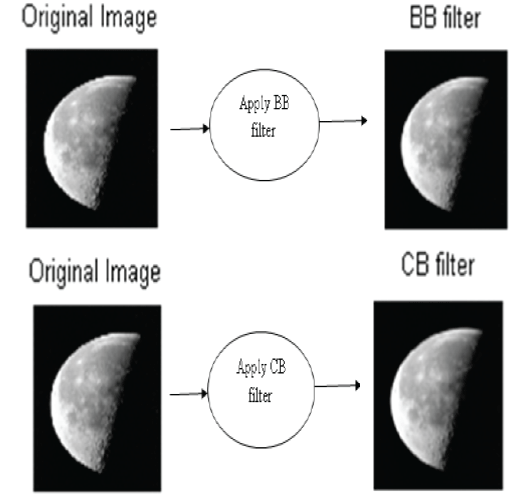 |
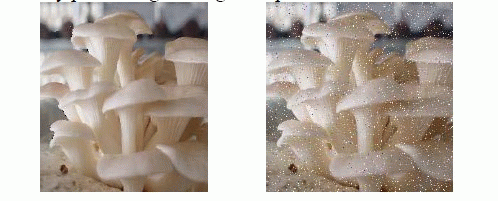 |
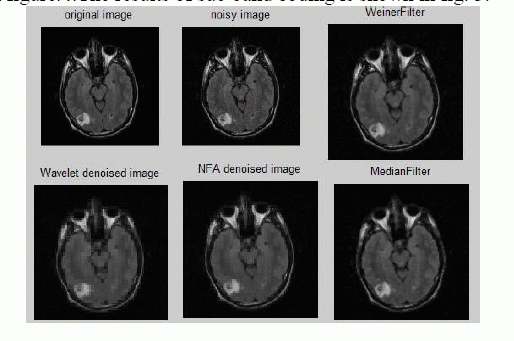 |
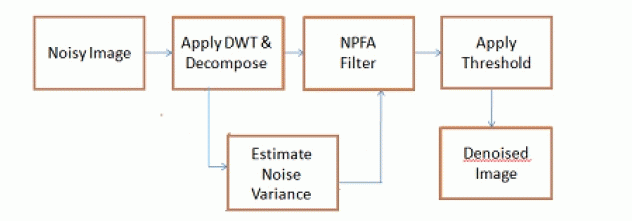 |
| Figure 1 |
Figure 2 |
Figure 3 |
Figure 4 |
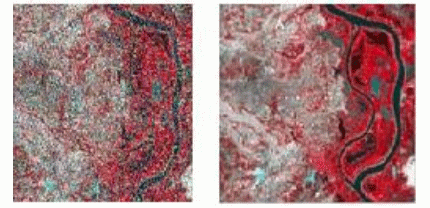 |
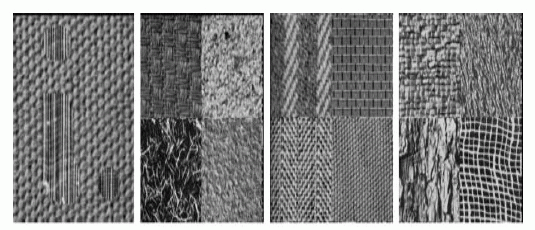 |
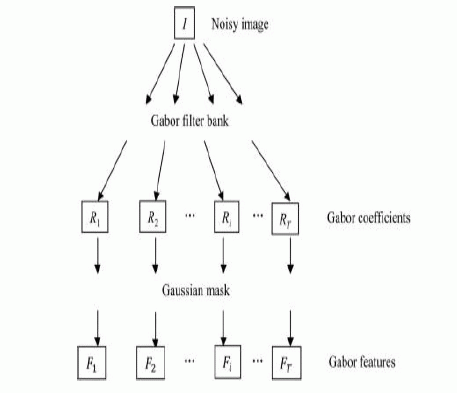 |
| Figure 5 |
Figure 6 |
Figure 7 |
|
| |
References
|
- Krishnan Kant Lavania, Shivali and Rajiv Kumar,”Image Enhancement using Filtering Techniques”, International Journal on computerScience and Engineering,Vol.4,Issue No.1,pp.14-20, January 2012.
- G.Venkateswara Rao, Satya P Kumar Somaiyajulu and C.P.V.N.J.Mohan Rao, “Implementation of Impulse Noise Reduction Method toColor Images using Fuzzy Logic”, Global Journal of Computer Science and Technology, Vol.11, Issue No. 22, pp. 71-75, December2011.
- Rajesh Kumar Rai, JyotiAsnani, R.R.Sontakke, “Review on Shrinkage Techniques for Image Denoising”, International Journal ofComputer Applications, Vol. 42, Issue No.19, pp. 13-16, March 2012.
- S.Kalavathy and R.M.Suresh,”Application of Sub band Adaptive Thresholding Technique with Neighborhood Pixel Filtering forDenoising MRI Images”, International Journal of Engineering Science and Technology (IJEST), Vol.4, Issue No.2, pp. 731-740, February2012.
- G.L.V.TataRao, M.S.Madhan Mohan and Dr.G.M.V.Prasad, “A New Method for Impulse Noise Removal in Remote Sensing Images”,Global Journal of Computer Science and Technology, Vol.11, issue No.17, Ver.1.0, pp. 41-44, October 2011.
- Mingyuan Zhou, Haojun Chen, et.al,”Non-Parametric Bayesian Dictionary Learning for Analysis of noisy and incomplete Images”, IEEETransactions on Image Processing, Vol. 21, Issue No.1, pp. 130-144, January 2012.
- Yuan Q,Zhang L and Shen H,“Hyperspectral Image Denoising Employing a Spectral-Spatial Adaptive Total Variation Model”,IEEETransactions on Geosciences and Remote Sensing, Vol.PP,Issue No.99,pp. 1-18,2012.
- AkhileshBijalwan, NidhiSethi and R.P.Arora,”Image Denoising using Wavelet Technique: ID-WT”, International Journal of AdvancedScientific Research and Technology, Vol.3, Issue No.2, pp .275-280, June 2012.
- S.Sudha, GR.Suresh and R.Sukanesh,” Speckle Noise Reduction in Ultrasound Images Using Context-based Adaptive WaveletThresholding”, IETE Journal of Research, Vol.55, Issue No.3, pp. 135-143, August 2009.
- Antonio Buemi, ArcangeloBruna, Massimo Mancuso, Alessandro Capra and Giuseppe Spampinato, Chroma Noise Reduction in DCTDomain Using Soft-Thresholding, EURASIP Journal on Image and Video Processing 2010, doi:10.1155/2010/323180.
- Biao Hou, Xiaohua Zhang, Xiaoming Bu and HongxiaoFeng,”SAR Image Despeckling based on NonsubsampledShearlet Transform”,IEEE Journal of applied Earth observations and Remote sensing”, Vol. 5, Issue No. 3, pp. 809-823, June 2012.
- Shanshan Wang, et al,”Gabor Feature based nonlocal means filter for textured image denoising”, Journal of Visual Communication and Image Representation, Vol. 23, Issue No. 7, pp.1008-1018, October2012.
|